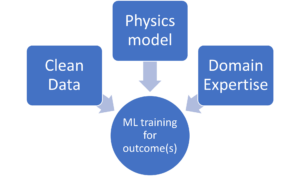A technical paper titled “Accelerating Defect Predictions in Semiconductors Using Graph Neural Networks” was published by researchers at Purdue University, Indian Institute of Technology (IIT) Madras, GE Research, and National Institute of Standards and Technology (NIST).
Abstract:
“Here, we develop a framework for the prediction and screening of native defects and functional impurities in a chemical space of Group IV, III-V, and II-VI zinc blende (ZB) semiconductors, powered by crystal Graph-based Neural Networks (GNNs) trained on high-throughput density functional theory (DFT) data. Using an innovative approach of sampling partially optimized defect configurations from DFT calculations, we generate one of the largest computational defect datasets to date, containing many types of vacancies, self-interstitials, anti-site substitutions, impurity interstitials and substitutions, as well as some defect complexes. We applied three types of established GNN techniques, namely Crystal Graph Convolutional Neural Network (CGCNN), Materials Graph Network (MEGNET), and Atomistic Line Graph Neural Network (ALIGNN), to rigorously train models for predicting defect formation energy (DFE) in multiple charge states and chemical potential conditions. We find that ALIGNN yields the best DFE predictions with root mean square errors around 0.3 eV, which represents a prediction accuracy of 98 % given the range of values within the dataset, improving significantly on the state-of-the-art. Models are tested for different defect types as well as for defect charge transition levels. We further show that GNN-based defective structure optimization can take us close to DFT-optimized geometries at a fraction of the cost of full DFT. DFT-GNN models enable prediction and screening across thousands of hypothetical defects based on both unoptimized and partially-optimized defective structures, helping identify electronically active defects in technologically-important semiconductors.”
Find the technical paper here. Published September 2023 (preprint).
Rahman, Md Habibur, Prince Gollapalli, Panayotis Manganaris, Satyesh Kumar Yadav, Ghanshyam Pilania, Brian DeCost, Kamal Choudhary, and Arun Mannodi-Kanakkithodi. “Accelerating Defect Predictions in Semiconductors Using Graph Neural Networks.” arXiv preprint arXiv:2309.06423 (2023).
Related Reading
Journey From Cell-Aware To Device-Aware Testing Begins
Better test quality is required as devices become more heterogeneous and denser and use cases become more critical; tradeoffs are cost and time.
- SEO Powered Content & PR Distribution. Get Amplified Today.
- PlatoData.Network Vertical Generative Ai. Empower Yourself. Access Here.
- PlatoAiStream. Web3 Intelligence. Knowledge Amplified. Access Here.
- PlatoESG. Carbon, CleanTech, Energy, Environment, Solar, Waste Management. Access Here.
- PlatoHealth. Biotech and Clinical Trials Intelligence. Access Here.
- Source: https://semiengineering.com/predicting-defect-properties-in-semiconductors-with-graph-neural-networks/
- :is
- 2023
- 98
- a
- accuracy
- across
- active
- an
- and
- applied
- approach
- ARE
- around
- AS
- At
- based
- become
- BEST
- both
- Brian
- by
- CAN
- cases
- charge
- chemical
- Close
- computational
- conditions
- convolutional neural network
- Cost
- critical
- Crystal
- data
- datasets
- Date
- density
- develop
- Devices
- different
- electronically
- enable
- energy
- Errors
- established
- EV
- Find
- For
- formation
- fraction
- Framework
- from
- full
- functional
- further
- ge
- generate
- given
- graph
- Graph Neural Network
- graph neural networks
- Group
- helping
- here
- HTTPS
- identify
- improving
- in
- Indian
- innovative
- Institute
- kumar
- largest
- levels
- Line
- many
- materials
- mean
- models
- more
- multiple
- namely
- National
- native
- network
- networks
- Neural
- neural network
- neural networks
- nist
- of
- on
- ONE
- optimization
- optimized
- Paper
- plato
- Plato Data Intelligence
- PlatoData
- potential
- powered
- predicting
- prediction
- Predictions
- Prince
- properties
- published
- quality
- range
- represents
- required
- research
- researchers
- root
- screening
- Semiconductors
- September
- show
- significantly
- some
- Space
- square
- standards
- state-of-the-art
- States
- structure
- structures
- Take
- Technical
- techniques
- Technology
- test
- tested
- Testing
- that
- The
- theory
- thousands
- three
- time
- titled
- to
- Train
- trained
- transition
- types
- university
- us
- use
- using
- Values
- was
- we
- WELL
- which
- with
- within
- yields
- ZB
- zephyrnet












